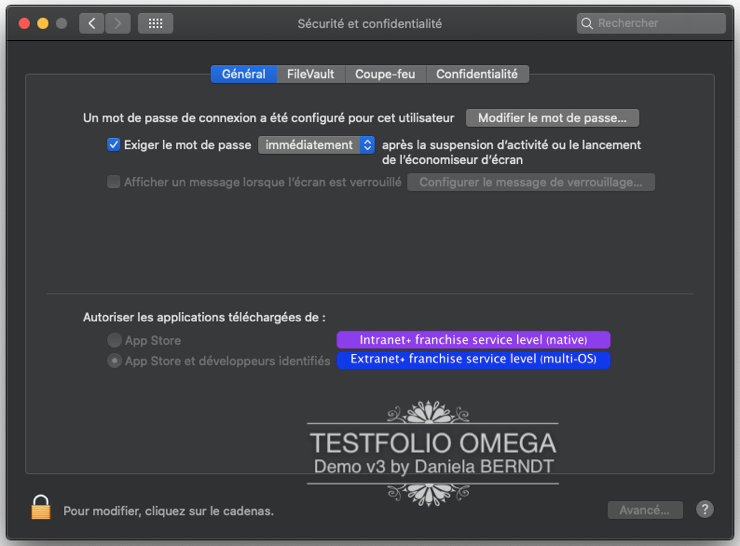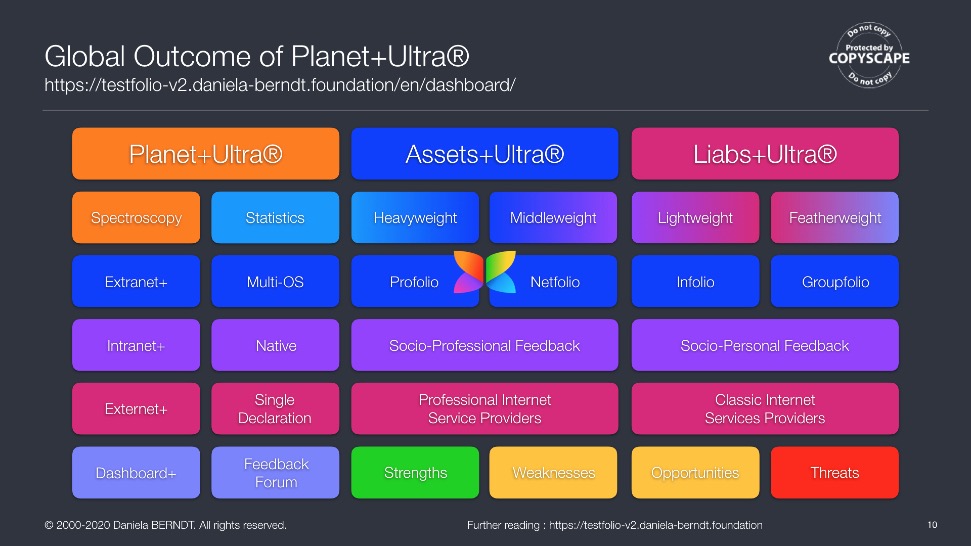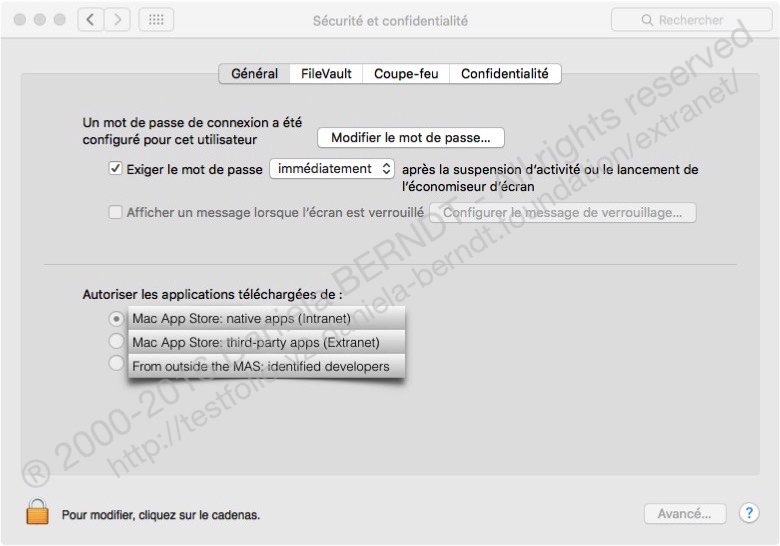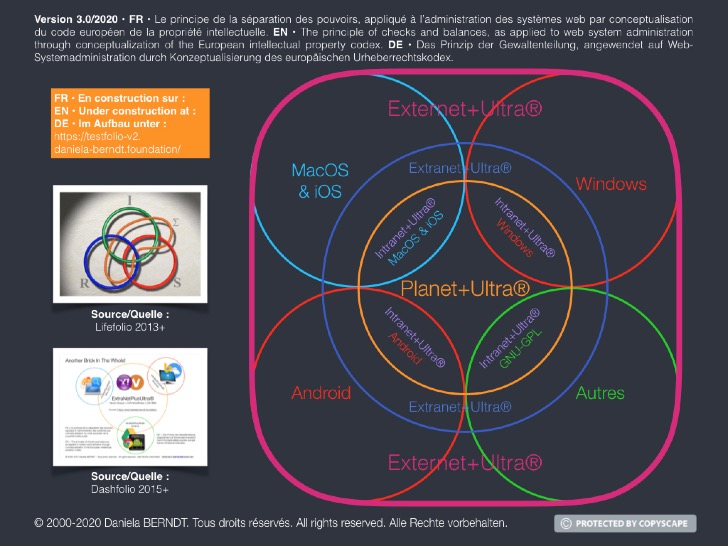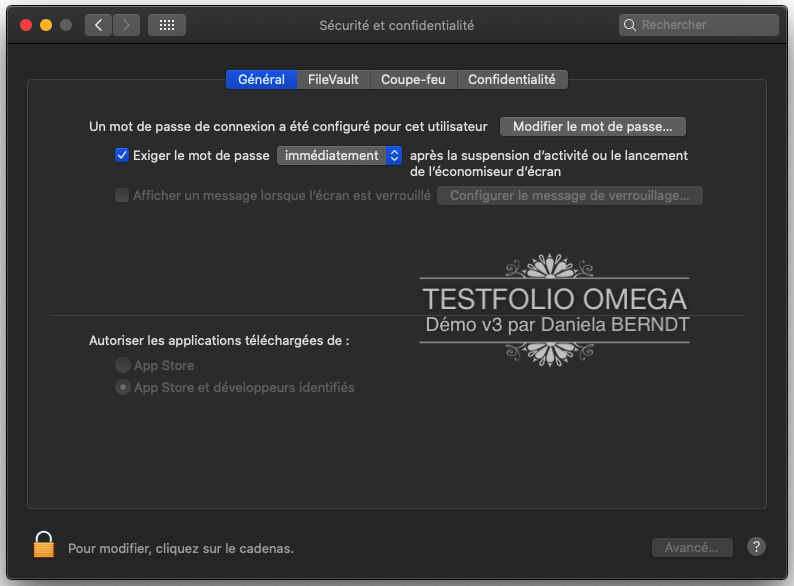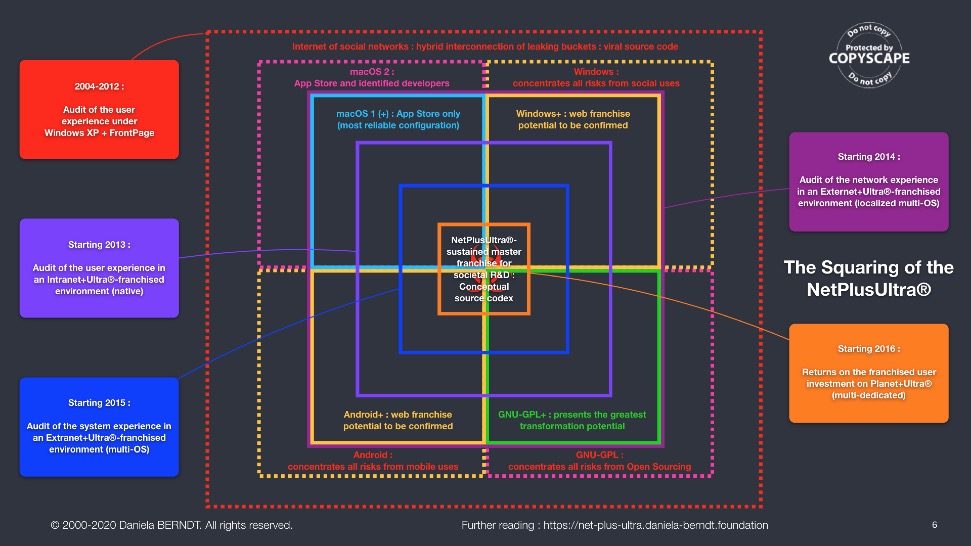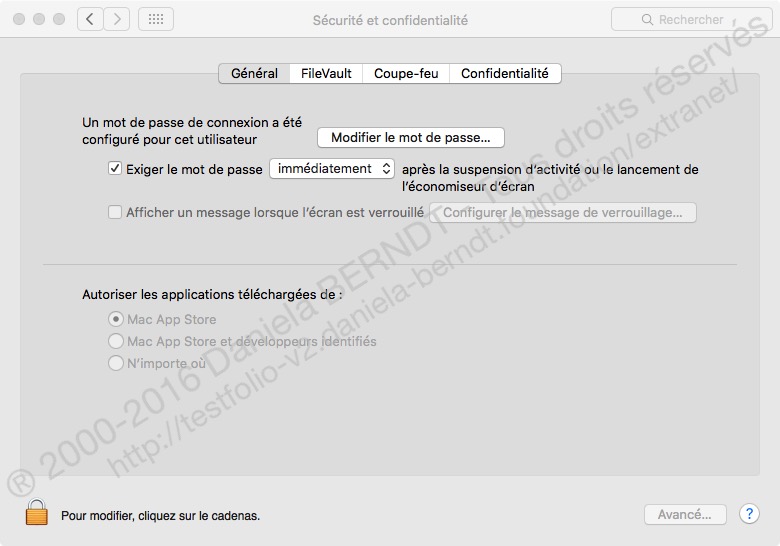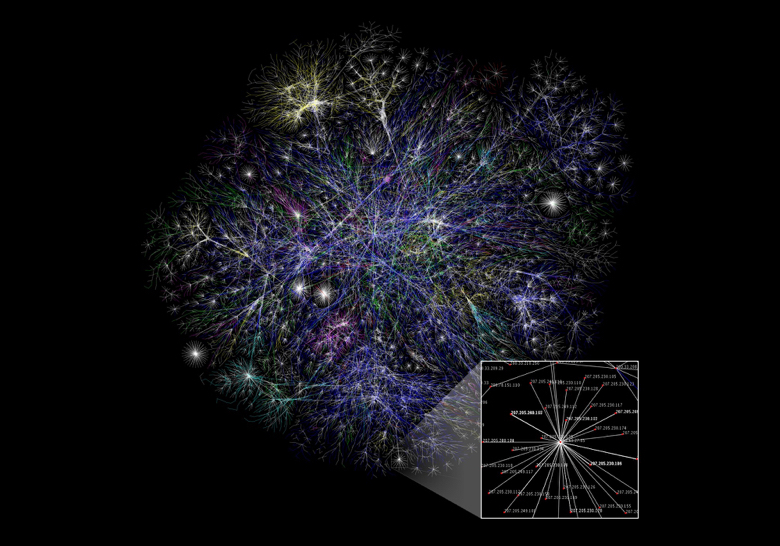Multidimensional Separation of Concerns and Conceptual Separation of Powers
- ASSETS (AFTER)
- LIABILITIES (BEFORE)
"OS Settings" image : "Security & Privacy" options of the "System Preferences" of "Mac OS X El Capitan" after conceptualization,
i.e. after integration into the system of the triple distinction to be made between Intranet + Extranet = Externet environments, as presented in the present Testfolio Omega (please click on a thumbnail to enlarge the view). While the "Intranet+" level authorizes only native downloads from the Mac App Store, the "Extranet+" level extends this authorization to third-party apps from the Mac App Store as well, whereas the "Externet+" level is reserved for franchised members providing "outside-in" migration solutions to the (outside) internet of social networks. The "System Map" presents an overview of Planet+Ultra® after redeployment of the existing internet into a conceptual "Externet+Ultra®"-enabled franchising system. Without pretending to be 100% (human) error-free, the map clearly shows how much computer safety requires nothing more than proper conception!-

MacOS+ Settings (Testfolio Omega v3.0/2020+).
-

Master Franchised Systems Map (Techfolio v2.6/2019+).
-

Mac OS X El Capitan Settings (Testfolio Omega v1.0/2016+).
-

Master Franchised Systems Map (Testfolio Omega v1.0/2016+).
"OS Settings" visual : screen capture of the "Security & Privacy" options of the "System Preferences" of "Mac OS X El Capitan".
The first level of safety, which I coined "Mac 1", authorizes only downloads from the Mac App Store, without however drawing a clear line between native and third-party apps, which leaves the user confronted with a legal void when the download is motivated by the necessity to manage critical contents. The second level of safety ("Mac 2") authorizes downloads from identified developers, but from outside the Mac App Store, i.e. without the level of guarantees that only an entirely native configuration can provide. As for the third level of safety ("Mac 3"), it could be renamed the "hara-kiri configuration", as it authorizes blind downloads from anywhere. The "System Map" provides an overview of the type of global internet system brought about by cloud computing (please click on a thumbnail to enlarge the view).-

MacOS Catalina Settings (Testfolio Omega v3.0/2020+).
-

Master-framing the NetPlusUltra® (Techfolio v2.6/2019+).
-

Mac OS X El Capitan Settings (Testfolio Omega v1.0/2016+).
-

Internet System Map (Testfolio Omega v1.0/2016+).
Upgrade of all international directives in direction of official internet market operators in each country.
Implementation of the normative-adaptative webmail-identifier model introduced at the "Externet+" level.
Upgrade of all existing operating systems, according to the official ISPs in each country.
Implementation of the "Intranet+ Cloud Identifier" presented at stage 3, in order to empower the user to develop and customize his·her own scalable R&D lab.
Implementation of the "Multi-OS Extranet+ Identifier" presented at stage 3, in order to empower "Intranet+" users to publish, share, and collaborate on web contents intended for users of other native OS environments.
Progressive redeployment of all official OS-based App Stores, according to the dehybridization strategy presented in the above accounts sheet.
Progressive redeployment of web services, according to the requirements set forth above.
